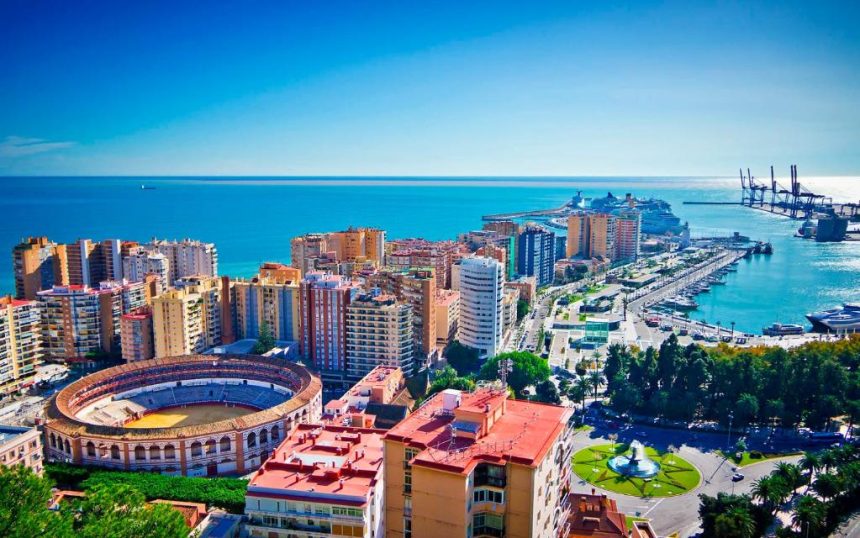Andalusia, due to its climate, gastronomy and cultural offer, has always been the preferred destination for foreign tourists during the summer period. But this trend is changing, and with the notorious increase in temperatures, as a result of global warming, domestic and foreign tourists are opting for new destinations in the northern peninsular area, hitherto unknown.
The Mediterranean has been replaced, to a large extent, by the Atlantic and the Cantabrian Sea. Star summer destinations for international tourism such as Andalusia and the Valencian Community have this time left the top of the ranking to Galicia, Asturias and Cantabria. In August alone, these three northern autonomous communities registered 435,500 visitors, 47% more than in 2022.
According to data provided by Exceltur, the Cantabrian coast has experienced an average growth of over 25% this summer. Being exposed to a cooler climate, with a lower rate of rainfall and away from the heat waves that have affected the south of the peninsula, have become the preferred destination last summer. More than 37,350,000 tourists visited Spain this summer, representing an increase of 12.48% over the same period in 2022.
The Basque Country was the autonomous community that saw the greatest increase in sales compared to the summer of 2019 (the last one before the pandemic), registering 27.4% more. It was followed by Galicia, with 27% more, and Asturias, with 26%. For its part, Cantabria acquires 15.6% more and enters within the list of preferred destinations.
The classics never die
But despite the increase in visitors to the northern peninsular, the classics such as the Balearic Islands, the Canary Islands, Catalonia, the Valencian Community and Andalusia once again triumphed. Andalusia registered a large growth in the number of foreign tourists received between June and September, with 16.11% more compared to the same period in 2022. The highest record, according to INE data, was obtained by the Community of Madrid with 22.65%. The Balearic Islands improved by 7.06% and the Canary Islands by 5.45%.
The drop in the growth rate of foreign visitors to Andalusia puts the community, whose economy depends largely on the tourism sector, on alert.
A change of trend that worries Andalusia
Tourism is a very important item for the Andalusian GDP, as in 2022 alone the tourism industry generated 22,553 million euros. Rising temperatures are forcing the southern part of Spain to review its tourism model, and even more so if we take into account that Spain is the second most visited country in the world after France, with a total of 72 million international tourist arrivals in 2022 (according to data from the World Tourism Organization). For the country as a whole, tourism represents 12-13% of GDP.
Climate change negatively affects Andalusia, but benefits the northern peninsular area, which transforms it into a landscape of beaches with warmer water, less rainfall, less overcrowded and with an excellent gastronomic and real estate offer. In the area of Asturias and Galicia, prices are even lower than in the Basque Country and Cantabria, which attracts a new consumer profile.
Galicia is aware that it is increasing the arrival of both national and international tourists. Just keep in mind that in traditional destinations such as Malaga, Marbella and Torremolinos, the AEMET issued 63 severe heat warnings in August, with temperatures above 39ºC. Six extreme heat warnings were also issued, with coastal temperatures above 42ºC.
Everything depends on changing the concept and the offer. Taking as a reference the advertising campaign “Spain is different” from the 1960s, we must work to attract tourism in winter to southern Spain, offering a more attractive climate. Something that attracts the attention of foreign visitors is that, in spite of over 45 degrees Celsius, the beaches are crowded with people.
Construction companies specializing in tourist accommodation are opting for the Asturian coast as an unbeatable destination for their new developments. In these areas there are conditions of environment, landscape and adequate infrastructure connections that invite optimism in the sector.
Spending figures
The summer of 2023 left record spending figures in Madrid, with an average of 1,745.24 euros per person. It was followed by the Canary Islands (1,534.76 euros), Andalusia (1,313.34 euros), the Balearic Islands (1,290.75 euros), Valencia (1,278.75 euros), Catalonia (1,238.25 euros) and other communities (1,035.72 euros).
From Exeltur it is betting that Spain will close 2023 with revenues of 183,000 million euros, 16.3% more than the activity levels of 2019. In this way, tourism will manage to consolidate the recovery path started in 2022 and, therefore, return to levels prior to the health crisis in which the final contribution to GDP was around 12.6%.


